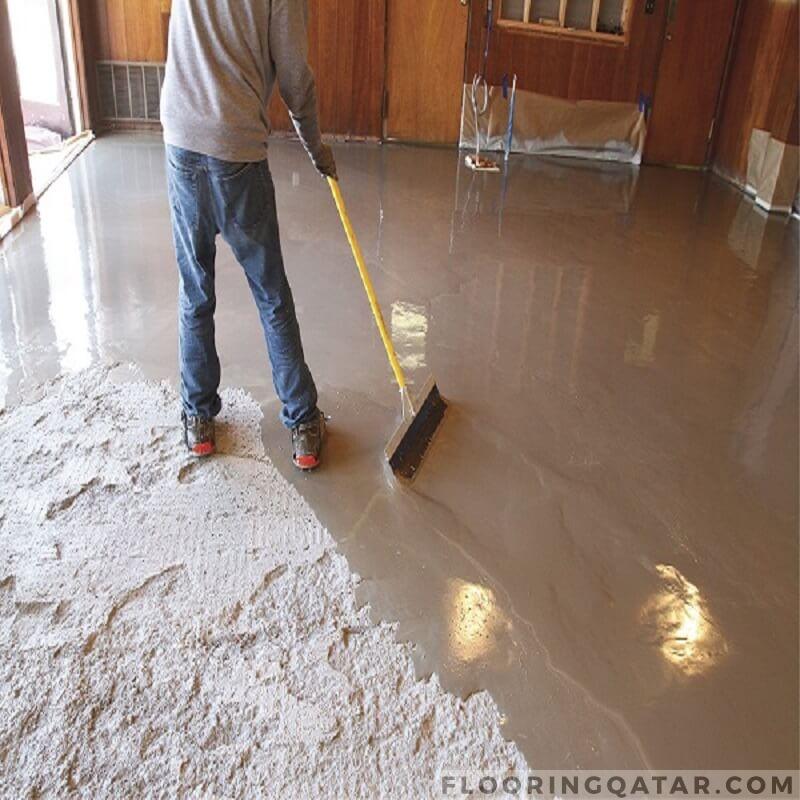CLEARANCE SALE UPTO 40% | LIMITED TIME OFFER | HURRY UP!
Floor Self Leveling
A beautiful concrete floor can be constructed quickly and easily with a self-leveling floor. However, after that, it is time to begin constructing the area of your dreams! Get ready to reap the rewards that come with having flooring made of self-leveling concrete! When is the use of self-leveling concrete appropriate? Most people are looking for information on how to level the concrete in their workplace or basement. In addition to that, they are searching for a concrete levelling solution that would work for their commercial area. How to choose the best material is another important issue that all newcomers should ask. Let’s dig deeper into the details.
What Is a Self-Leveling Floor?
Self-leveling The floor is made of a cementitious compound designed to flow, fill in low spots, and create a flat and smooth surface. Additionally, it is frequently used as a subsurface for installing several other resilient flooring types. In a nutshell, the texture of a self-leveler is more similar to that of a slurry. Because of this limitation, it cannot be used on any surfaces that are vertical.
Warehouse floors, institutional flooring, educational flooring, and commercial flooring are all examples of typical usage. In point of fact, the majority of homeowners of residential properties can complete their own little DIY projects, such as dumping a few bags into the floor, without the assistance of a professional.
How can you select the right floor leveller for in-floor heat?
Self-leveling underlayment is an excellent selection for any tiled floor, but it is particularly advantageous for use when tiling an area that will be heated from below by an underfloor heating system. The cement board would not work, and if you choose to set up a mortar bed instead, it would take a long time; it would be more difficult to obtain a plane surface; and the screening process may potentially damage the matting or heating cables.
Can you mix a bunch of floor levelers simultaneously?
Before beginning the mixing process, ensure that each bucket contains the amount of water specified in the recipe. When moving the mixture from one bucket to another, keep the buckets as close together as possible to reduce the amount of mess that is created. Make sure the handles of all the buckets are facing outward so they can be easily grabbed. After you have thoroughly combined the contents of each bucket of floor leveller, return to the first bucket and give it a few additional stirs in order to reawaken the sand that has settled to the bottom. Take the mixer out of the container, and place it in the next bucket that needs to be brought in. After that, empty each bucket, then shake the sand in the next one before bringing it in. Do this until you have finished.
How can you fill a bucket?
Create a bucket that can be refilled in a short amount of time. Put the required amount of water into a bucket that has been thoroughly cleaned, and then use a marker to draw a fill line on the exterior of the bucket. There is also the possibility of drilling small holes at the fill line in order to allow the bucket to drain to the appropriate level. It is far quicker to submerge a bucket into a barrel that is already full of water rather than to repeatedly fill the bucket with water using a hose.
Why choose us?
Flooringqatar. When it is dry, the surface that our self-levelling creates is flawless and functions precisely, making it an easy surface to clean. Perfect for use in the beverage, pharmaceutical, and food processing sectors, as well as packaging operations. DubaiFlooring.ae is the company that offers the most effective self-levelling service, which enhances safety by producing a flooring solution that is stable, unbroken, and resistant to heat and fire. The self-levelling that is offered by dubaiflooring.ae is extremely long-lasting and is an excellent choice for residential, commercial, and even industrial settings. The high-quality materials that are used for self-leveling are chemically and thermally resistant, which protects it from damage caused by the natural elements and allows it to maintain its look and its attractiveness over time.




